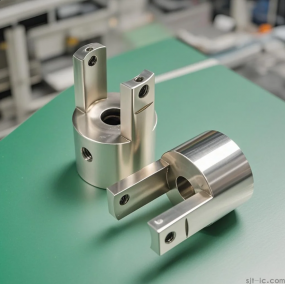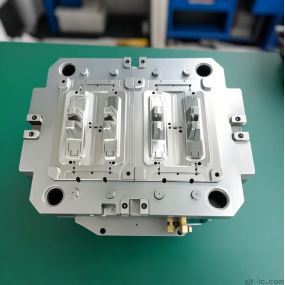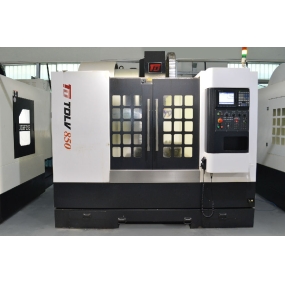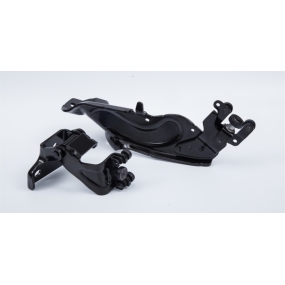1. Parts (also known as components) are made of non-removable units, such as screws, springs, shafts, etc.
2. Components (also known as devices) are assembled from two or more processed parts. Rolling bearings, linear guides, shock absorbers, etc.
3. Components (also known as whole parts) Several parts box components are assembled according to the requirements of the assembly drawing to have a complete mechanism and structure, which can implement independent functions. Reducer, motor, sensor, damper, etc.
4. Complete machine, tape recorder, copier, video camera, etc.
5. Basic requirements of precision instruments and equipment for mechanical systems (1), functional characteristics requirements (2), accuracy requirements (3), sensitivity requirements (4), stiffness requirements (5), strength requirements (6), working stability requirements (7), structural public welfare requirements (8), use requirements
6. Mechanism Accuracy: The accuracy of mechanical systems and structures is usually referred to as mechanism accuracy. Or the degree of conformity between the actual mechanism and the ideal mechanism motion law is called mechanism accuracy. 2. Mechanism Error: The deviation between the actual mechanism motion accuracy and the ideal mechanism motion accuracy. 3. Ideal Mechanism: A mechanism that can give the motion law in advance with absolute accuracy. Tasks: 1) Mechanism Error Synthesis 2) Mechanism Accuracy Assignment
7. 1) Accuracy of mechanism: The degree of deviation between the actual motion of the mechanism and the ideal motion caused by the systematic error. Reflects the systematic error of the mechanism, which can be improved or improved by adjusting, selecting or adding compensation correction devices and introducing correction amounts. 2) Mechanism precision: The degree of consistency of the mechanism‘s repeated motion. The precision of the mechanism reflects the random error of the mechanism. 3) Mechanism precision (precision) Precision reflects the degree of comprehensive influence of the mechanism‘s systematic error and random error. Accuracy and precision together reflect accuracy. The accuracy of the mechanism can only be high if both precision and accuracy are high.
8. Error classification (1) Classification by error nature 1) Systematic error 2) Random error (2) Classification by relationship between errors 1) Independent error 2) Correlation error (3) Classification by time characteristic of error 1) Static error 2) Dynamic error (4) Classification by error representation method 1) Absolute error 2) Relative error (5) Classification by error source 1) Principle error 2) Manufacturing error 3) Usage error
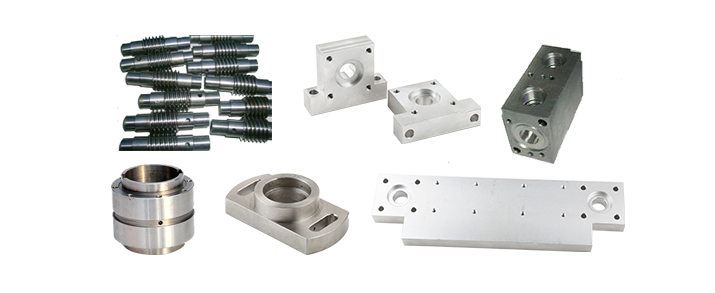


 Spanish
Spanish Arabic
Arabic French
French Portuguese
Portuguese Belarusian
Belarusian Japanese
Japanese Russian
Russian Malay
Malay Icelandic
Icelandic Bulgarian
Bulgarian Azerbaijani
Azerbaijani Estonian
Estonian Irish
Irish Polish
Polish Persian
Persian Boolean
Boolean Danish
Danish German
German Filipino
Filipino Finnish
Finnish Korean
Korean Dutch
Dutch Galician
Galician Catalan
Catalan Czech
Czech Croatian
Croatian Latin
Latin Latvian
Latvian Romanian
Romanian Maltese
Maltese Macedonian
Macedonian Norwegian
Norwegian Swedish
Swedish Serbian
Serbian Slovak
Slovak Slovenian
Slovenian Swahili
Swahili Thai
Thai Turkish
Turkish Welsh
Welsh Urdu
Urdu Ukrainian
Ukrainian Greek
Greek Hungarian
Hungarian Italian
Italian Yiddish
Yiddish Indonesian
Indonesian Vietnamese
Vietnamese Haitian Creole
Haitian Creole Spanish Basque
Spanish Basque

